A few mornings ago, I was drawing back the curtains in the kitchen window and I discovered something was out of place. I suppose when you do the same thing every day, you just notice these things. Anyway, I looked a little closer and I spotted a juvenile broad-winged hawk Buteo platypterus in the front yard. I grabbed my camera and went outside to see if I could take a few photographs. I was expecting the hawk to fly away as soon as I went outside, but it stuck around for a bit. The following photographs were taken over two mornings. I believe the young hawk has moved on to a different location because I haven’t had the chance to see it again.
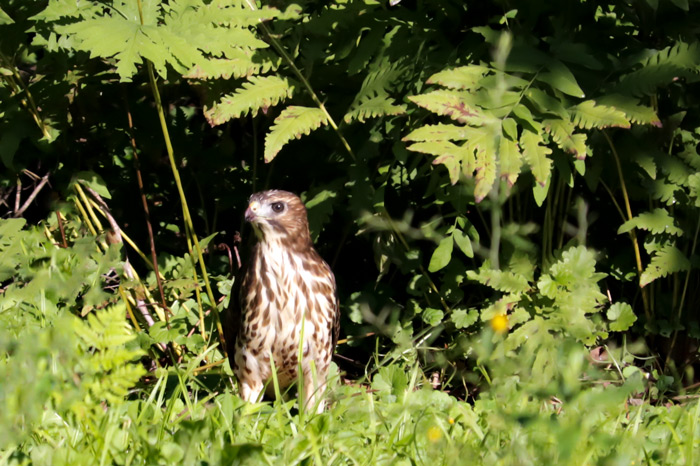
The broad-winged hawk is a raptor belonging to the genus Buteo.
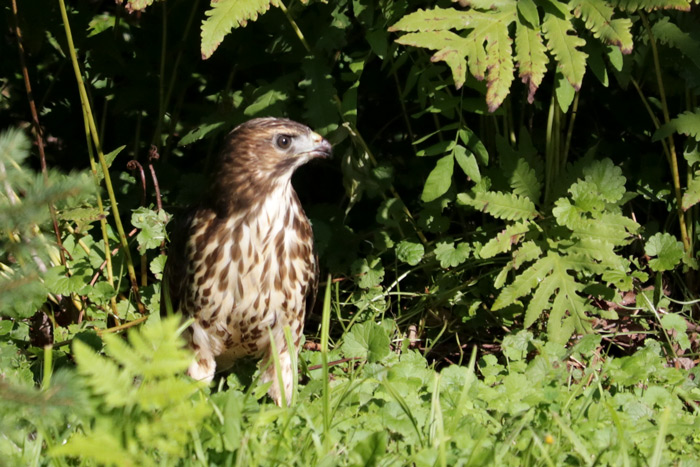
The broad-winged hawk is a small and compact raptor and a little larger in size than a crow. Similar to most raptors, females are slightly larger than males. These hawks have chunky bodies and large heads. While in flight, their broad wings come to a distinct point. The tail is short and square. The young red-shouldered hawk is similar to the young broad-winged hawk, but the red-shouldered hawk is chunkier.
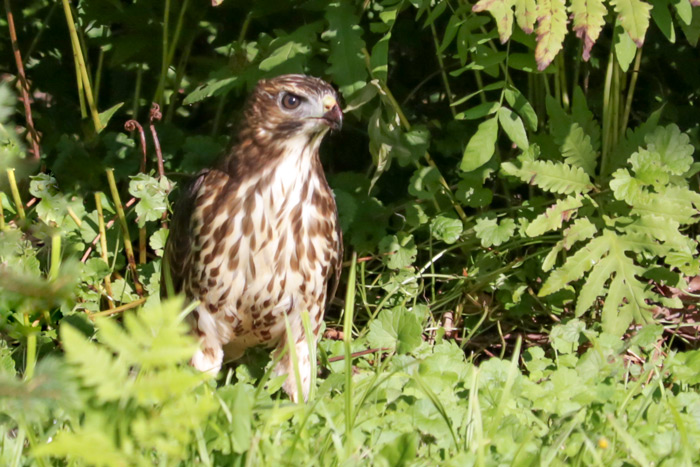
Adult broad-winged hawks have reddish-brown heads, barred underparts, and broad black and white bands on their relatively short tail. The undersides of the wings are pale and are bordered on dark brown. Juveniles are a lighter brown with coarse streaking on the underparts, particularly on the sides of the breast and the tail is narrowly banded.
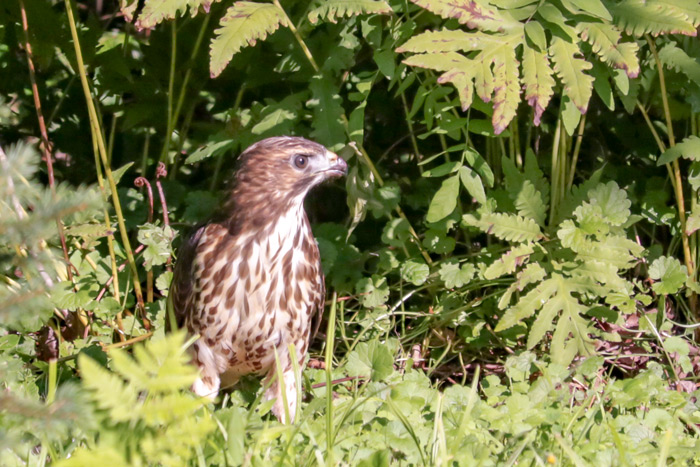
The voice of the broad-winged hawk is a piercing, thin and high whistle on one pitch.
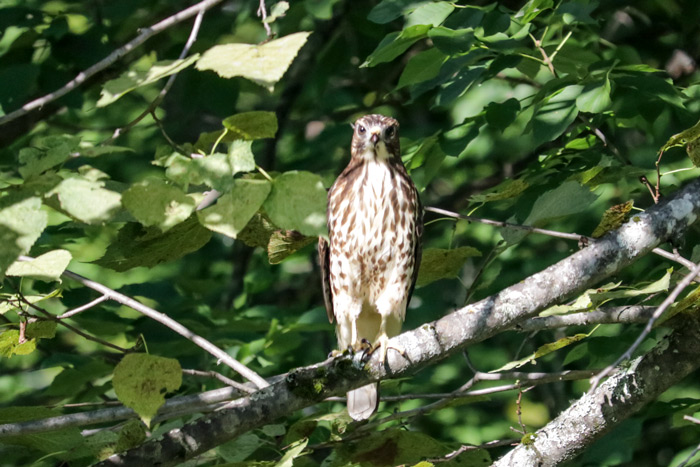
Preferred habitats of the broad-winged hawk include dense deciduous and mixed woodlands, often near openings created by roads, trails, or wetlands.
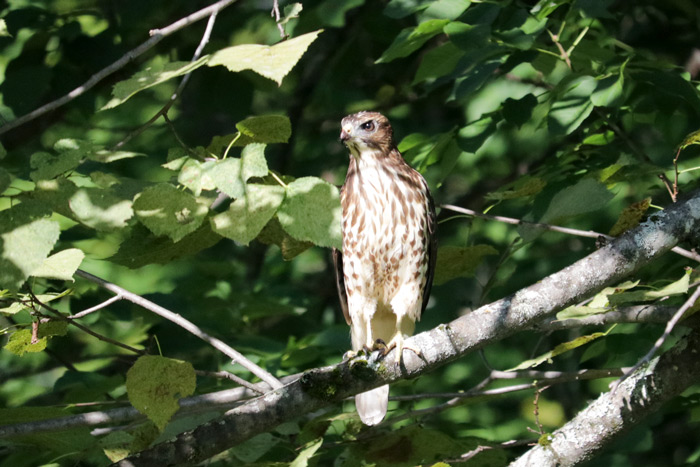
Broad-winged hawks are carnivores and the type of food they eat depends on availability. During the summer or nesting season, these hawks will consume chipmunks, shrews, voles, frogs, lizards, and sometimes other nesting birds. In the winter, broad-winged hawks will eat insects, frogs, snakes, crabs, and some small mammals. They can survive on the water found in their prey as they rarely require the need to drink water. These hawks will hunt from perches underneath the forest canopy and sometimes soar above the canopy or openings such as roadways.
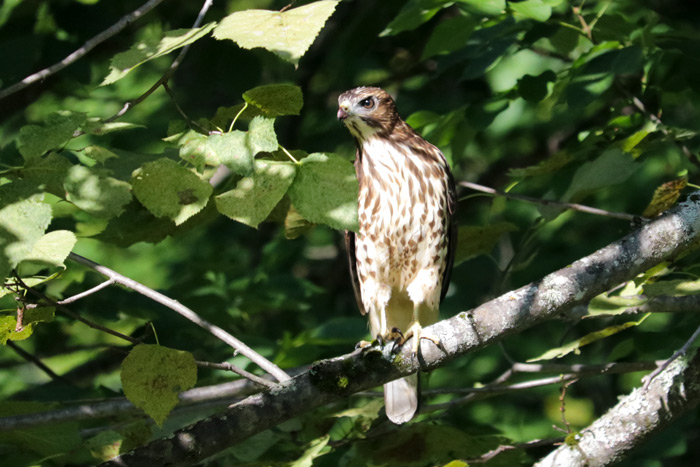
Broad-winged hawks breed in large deciduous or mixed forests close to water throughout the eastern United States and southern Canada. The nest is constructed by both sexes, consisting of a small platform of sticks that is lined with soft materials. These hawks will also use pre-existing nests of other hawks, as well as the nests of crows and squirrels. The female will lay two to three, sometimes one to four whitish eggs, that are usually spotted with brown. The female will incubate the eggs for 28-31 days. The male will bring food to the female during incubation. The female will remain with the young almost constantly for the first one to two weeks after they hatch. The male brings food to the nest and the female feeds it to the nestlings. The young hawks may climb out of their nest onto nearby branches at about four to five weeks. At five to six weeks, the young hawks will learn how to fly and hunt.
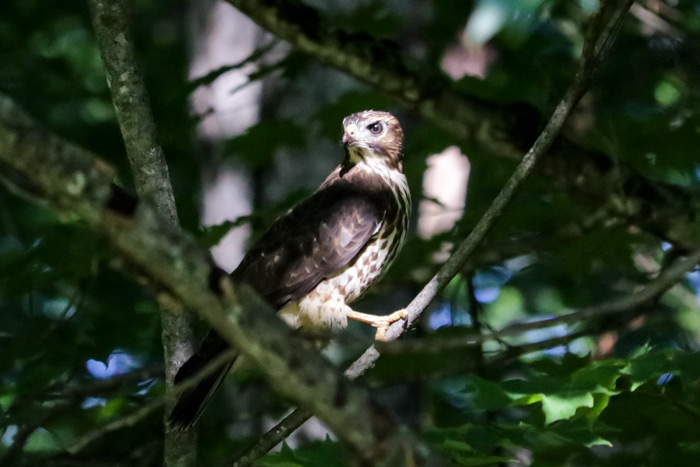
During the summer, broad-winged hawks are distributed over eastern North America and as far west as British Columbia and Texas. These hawks migrate in flocks down south to winter from Mexico down to southern Brazil.
Resources used for this post:
allaboutbirds.org & audubon.org
Leave a Reply